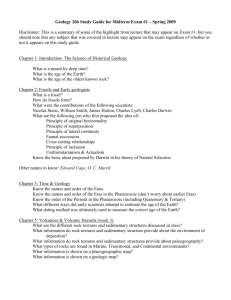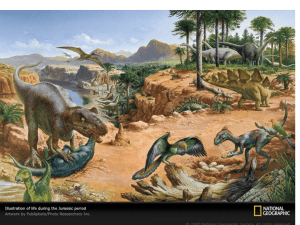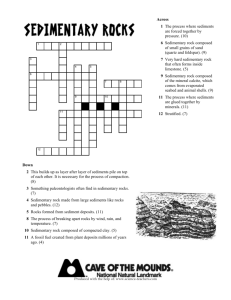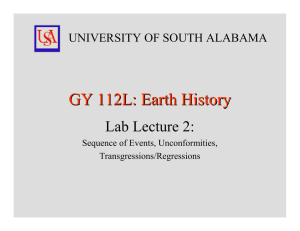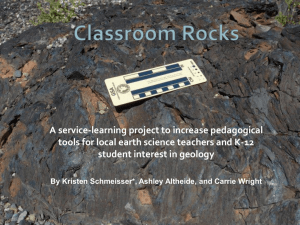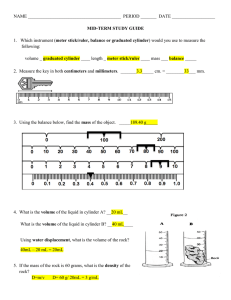Study Guide for Midterm Exam #1
advertisement
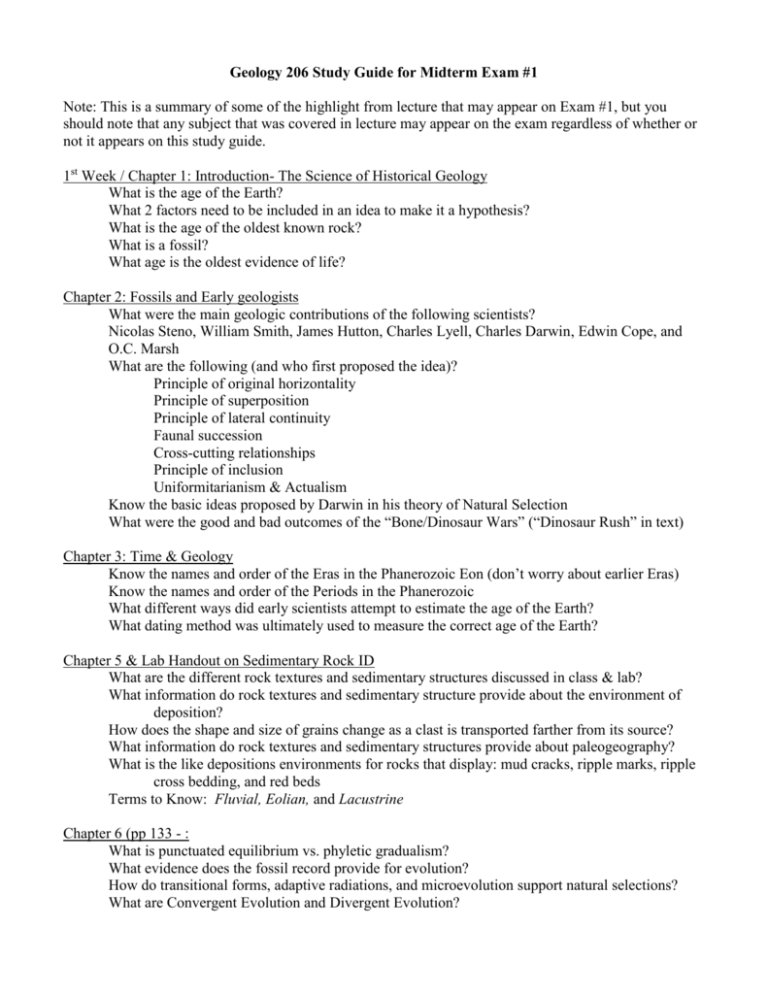
Geology 206 Study Guide for Midterm Exam #1 Note: This is a summary of some of the highlight from lecture that may appear on Exam #1, but you should note that any subject that was covered in lecture may appear on the exam regardless of whether or not it appears on this study guide. 1st Week / Chapter 1: Introduction- The Science of Historical Geology What is the age of the Earth? What 2 factors need to be included in an idea to make it a hypothesis? What is the age of the oldest known rock? What is a fossil? What age is the oldest evidence of life? Chapter 2: Fossils and Early geologists What were the main geologic contributions of the following scientists? Nicolas Steno, William Smith, James Hutton, Charles Lyell, Charles Darwin, Edwin Cope, and O.C. Marsh What are the following (and who first proposed the idea)? Principle of original horizontality Principle of superposition Principle of lateral continuity Faunal succession Cross-cutting relationships Principle of inclusion Uniformitarianism & Actualism Know the basic ideas proposed by Darwin in his theory of Natural Selection What were the good and bad outcomes of the “Bone/Dinosaur Wars” (“Dinosaur Rush” in text) Chapter 3: Time & Geology Know the names and order of the Eras in the Phanerozoic Eon (don’t worry about earlier Eras) Know the names and order of the Periods in the Phanerozoic What different ways did early scientists attempt to estimate the age of the Earth? What dating method was ultimately used to measure the correct age of the Earth? Chapter 5 & Lab Handout on Sedimentary Rock ID What are the different rock textures and sedimentary structures discussed in class & lab? What information do rock textures and sedimentary structure provide about the environment of deposition? How does the shape and size of grains change as a clast is transported farther from its source? What information do rock textures and sedimentary structures provide about paleogeography? What is the like depositions environments for rocks that display: mud cracks, ripple marks, ripple cross bedding, and red beds Terms to Know: Fluvial, Eolian, and Lacustrine Chapter 6 (pp 133 - : What is punctuated equilibrium vs. phyletic gradualism? What evidence does the fossil record provide for evolution? How do transitional forms, adaptive radiations, and microevolution support natural selections? What are Convergent Evolution and Divergent Evolution?
